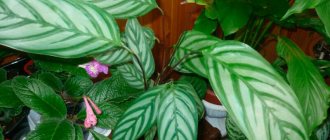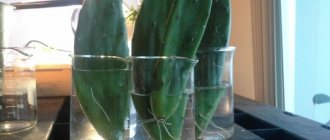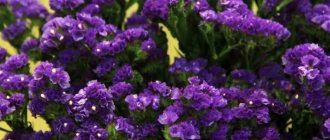Growing indoor plants is one of the most popular hobbies. You can use it to have fun. Chill out. And show concern for living beings. Plants.
Gardening in an apartment needs to be done correctly. In order for the flowers to last as long as possible. They brought pleasure to those who deal with them. And they didn’t wither away.
We will tell you how to grow plants at home. What needs to be done for this. And what rules should be taken into account during the process.
Ficus
This plant looks very beautiful as it has luxurious large curved branches and pointed leaves.
Thanks to its shape, the ficus will look beautiful near a window, next to a sofa, stairs, or any other corner where you need to add a piece of nature.
This is a very hardy plant that does not require too much care. That is why it will be an excellent option for beginners in the field of floriculture. Ficus looks interesting in a basket-type pot made of natural fibers.
Beginning florist where to start
Basically, we buy indoor flowers that we like, succumbing to an impulse of the soul, fascinated by the beauty of plants, without knowing anything at all about them. Without thinking in advance about which indoor flower to buy for your home. The correct option is to have knowledge about the plant we are buying. It is worth paying attention to the primary factors for growing and caring for the plant: temperature, humidity and watering.
Attention! If the home conditions do not meet your needs, you should refuse to purchase (no matter how much you like the plant) since your future together will not bring joy to either you or the flower.
If all the components of your apartment climate meet the requirements of the plant, feel free to acquire a new friend.
After purchasing a plant, keep a special journal in which you write down the name of the indoor flower. In it you will mark the dates of transplantation, watering, and fertilization. Believe me, it is very convenient, your notepad is always at hand, the information is important and deserves special attention. It’s easy to care for one indoor plant, or when flowers from the same family grow in the house.
But, if over time, after purchasing the first plant, you want to buy more and more, then these will be different indoor plants, with their own requirements and rules of care. Then you will thank yourself for such a necessary and necessary diary.
One of the prerequisites for the good development of indoor flowers is fresh air. For example, cacti may well not bloom, only because there is not enough fresh air; of course, not a single plant tolerates cold drafts.
When ventilating the room, you should try to prevent cold air from getting on the flowers; if difficulties arise with rearranging, then it would be quite acceptable to temporarily cover the plants with paper or a light cloth.
Ivy
This is a beautiful climbing plant that, if it finds the right support to properly cling to, will twine around it completely. This is an evergreen flower that looks good when several specimens are arranged together.
You can combine 2-3 pots with ivy and hang them on a hill. This will help create elegant green rugs. Ivy is an excellent choice for visually dividing space. It will also fit well into the interior of the kitchen for its landscaping.
Blue or yellow: how to calculate your interior color by date of birth
Not a warehouse, but a place to relax: how to decorate a balcony on a minimal budget
An investigation by Samara local historians confirms: “Zoya’s Standing” is a legend
elephant tree
This is a very tall houseplant. In a pot it can reach 1.5 meters, and in its natural habitat - up to 10 meters.
This plant is characterized by a thick trunk that resembles an elephant's leg. This is a very ornamental plant, and caring for it is as simple as possible. He just needs enough natural light, but it must be indirect. Good drainage is also recommended and the soil moisture should be checked periodically before watering.
Soil or hydroponics?
Another topic to consider is will you be growing in soil or using a hydroponic system (growing without soil)? It has always been believed that vegetables and herbs grown in the soil naturally taste better. With the development of advanced hydroponics solutions and fertilizers, this opinion is beginning to change. A variety of commercial and homemade hydroponic systems make it easy to fertilize your plants, and a selection of store-bought nutrient solutions can give your plants everything they would get from soil. It is always best to talk to your hydroponic system supplier about choosing a specific fertilizer.
Growing in soil is recommended for beginners. Gardeners who are fond of growing in vegetable gardens can easily transfer their experience to home conditions. If there is enough drainage, the soil is of high quality and well fertilized, and the plant is given at least some attention, then it will be quite easy to grow. Again, try to create Mediterranean conditions - dry, cool air, not too much fertilizer, a neutral to slightly acidic pH level (between 6 and 7) - and your herbs will thrive.
Growing in the ground won't be as expensive if you have low yield expectations. Soil is also more forgiving than hydroponics. If you miss watering or make another mistake, the plants will most likely be fine. Mistakes in hydroponics can lead to faster and more disastrous consequences.
Fortunately, modern hydroponic systems do not allow the gardener to make too many mistakes. When done correctly, hydroponic growing will yield faster and larger harvests. There are many different ways to design your hydroponic system, but even the simplest solutions require a little work, while more complex ones can be comparable in cost to commercial solutions and slightly beyond the capabilities of a gardening enthusiast.
Growing herbs hydroponically is easy.
Commercial hydroponic systems come in a variety of shapes and sizes. The wick system, which uses the capillary effect, is the simplest. Automatic watering systems may use a mechanical valve that begins watering when all of the substrate is dry. Intermittent flooding systems, as the name suggests, pump water to the roots and then allow it to drain so the roots can absorb oxygen. Deep water culture systems (DWC - Deep Water Culture) pump air into the solution using compressors, saturating it with oxygen.
Modern hydroponic system
The correct choice of substrate - this can be coconut fiber or other soilless mixtures, as well as various additives - is an individual decision for each gardener, depending on his preferences. Coconut fiber is highly valued for its ability to saturate the roots with both moisture and air. In addition, it is processed into compost. The experts at your hydroponic system store will help you choose the right system and the substrate that best suits it.
Ventilation and temperature in the grow space are also a very important issue. Herbs like cooler temperatures than you might think. Maintaining the ideal temperature - between 17 and 22 degrees - can be challenging if you have hot, powerful bulbs installed. Use fans or other air exchange methods to keep temperatures under control while also refreshing the air your herbs need to grow. Plants with broad leaves such as basil can absorb all the carbon dioxide from an enclosed space in a few hours, which is what promotes rapid growth. Constant air exchange will prevent this problem. If your conditions are too extreme, such as if you have a very humid basement, then you will need a dehumidifier to maintain the ideal humidity around 15-30%.
Aloe vera
This is one of the most famous plants, which is famous for its medicinal properties. Aloe juice helps soothe the skin after burns or eczema.
That is why it is recommended to keep this plant in your kitchen. Aloe will do double duty: bring a little greenery into the interior and act as a natural first aid kit. You can also make various nourishing cosmetic masks from the gel or add it to creams.
Rare 20,000-year-old Paleolithic blade found in China
The Home Cleaning Basket and Other Simple Time-Saving Tricks
Juicy roll made from simple ingredients: potatoes, cheese and ham
Pothos
This is a beautiful and hardy plant, without which no home is simply unthinkable. Because the stems of pothos droop and trail, it is best grown in a hanging basket or placed on a high shelf to enjoy its cascading effect.
In addition, pothos is known for its ability to purify the air and is durable.
Sansevieria
If you are a novice gardener, then Sansevieria should definitely be present in your home. This is an unpretentious houseplant that is easy to grow, as it can survive in absolutely any space, and is also highly resistant to pests.
Sansevieria can withstand both high and low temperatures (down to -5 degrees). This plant helps remove toxic substances from the air and looks beautiful due to its striped color.
Crocuses love phosphorus: how to feed them before flowering so that they will surprise you in April
Per liter of water 1 tbsp. spoon of peroxide: 5 tips for growing pepper seedlings
Restore blood vessels after coronavirus: recommendations from a therapist
How can you propagate indoor plants, orchids and cacti?
Orchid propagation.
Orchids can be propagated by seeds or individual plant parts. The first method is difficult, long and requires special knowledge. It is easier to propagate orchids vegetatively. The mother plant should be large and strong when it is several years old. The appropriate time for propagation in this case is spring, and for spring-flowering plants - the period after flowering.
How indoor plants such as orchids can be propagated depends on their growth.
Monopodial (single) orchids , such as the Slipper or Paphiopedilum , are propagated by division. When transplanted, they usually split into two or more plants on their own.
Sympodial (non-single) orchids , such as cattleya, are divided with a sharp knife so that each new plant has 3 to 5 elastic and green pseudobulbs.
In dendrobiums, shoots are cut into cuttings 10-15 cm long with at least three leaf nodes and laid out on a moist orchid substrate.
Moths , or Phalaenopsis , and dendrobiums can form side shoots. They are cut off under the aerial roots and planted in an orchid substrate.
Reproduction of cacti.
Most cacti are easy to propagate. When propagated by seeds, the first shoots appear within 2-3 days. After 2-3 weeks, the first thorns and hairs appear on the small plant. The most favorable time for sowing is from February to April. The ideal temperature for seedling formation is 28 °C. 1
When propagated by shoots of a well-flowering mother plant, offspring capable of flowering are most quickly obtained. The best time to prune shoots: from March to early September. To propagate house flowers such as cacti, proceed as follows:
- Cut off the shoot with a clean knife.
- Air dry the cut and place the shoot in a container so that air flows to the cut.
- Lightly spray the shoots in the mornings and evenings. After a few weeks, the first tips of the roots will appear on the cut.
- Plant the shoot in a pot with slightly moistened cactus substrate and gradually accustom it to the sun.
Dracaena
Dracaena looks beautiful and vibrant as it has leaves of varying shades of green. For proper growth and development, the plant requires a temperature of 15-25 degrees and good natural light, but not direct sunlight.
Dracaena loves high humidity, which is why you need to spray its leaves 2-3 times a week. This plant does not require too much watering, although the substrate should be slightly moist.
Hamedorea palm
This plant is resistant to negative conditions and easy to care for. Palm leaves are long and narrow. Although flowering can occur throughout the year, it is not too bright or colorful.
This is one of the tallest indoor plants. It can reach a height of two meters. The palm grows slowly and requires a temperature of 18-25 degrees, indirect light and moderate watering.
Extraction of white coral: the procedure is very similar to digging up potatoes
We make a comfortable homemade hammock for the cat. It replaces a pet's bed
With a wrap, a slit, and buttons: how to create looks with basic skirts in spring
Excess water can be harmful, which is why it is recommended to check the moisture content of the substrate before watering. If the climate in your area is dry, then you need to periodically spray the leaves. Palma does not like drafts and heat sources, in particular heating appliances.
The most unpretentious indoor plants
Chlorophytum
It is difficult to live without chlorophytum in the kitchen. The fact is that this plant can clear the air of harmful impurities, and especially from electromagnetic studies, faster than others. The flower can survive for a long time without watering or lighting, and grows well at high temperatures.
Chlorophytum will also be beautiful, even if you completely forget to care for it. True, every housewife cannot leave her pet without care.
"Woman's happiness"
“Women’s happiness” is also not a capricious plant. But with good care and feeding it will delight you with beautiful white flowers. You can feed with fertilizers that you prepare at home.
For example, make an infusion from banana peels. Fill the peels of two bananas with water, and after a day, water all the indoor plants. A pink solution of potassium permanganate will also be useful for every pet.
Hibiscus
The Chinese rose amazes with its original appearance and its unpretentiousness. Blooms all year round, survives in any temperature, but loves good light. If the air in the apartment is too dry, the rose will not refuse to be irrigated with water from a spray bottle.
Begonia
Begonia can be placed in a darkened corner of the apartment. It will feel great in any soil, at any temperature. But he won’t refuse watering. Begonia blooms very luxuriantly and violently. To make it look aesthetically pleasing, faded buds will have to be trimmed.
Pelargonium
Pelargonium can be grown on a windowsill. It blooms all year round at any air humidity and rare watering. In winter, with short daylight hours, it’s a good idea to turn on the backlight.
Dracaena
Dracaena is one of the most unpretentious plants that can save people from ailments and headaches. She does not like abundant watering. Water can destroy its roots. If the windows in the apartment face west or east, then place a pot with this amazing plant a meter from the window.
Fern
If you want to decorate your apartment with living greenery, then get a fern. It can even grow on the north side of the house, because it does not tolerate too bright light. You need to water it moderately, but you won’t mind taking a shower.
Aspidistra
This is simply an ideal plant for all beginning gardeners. It can grow in absolutely any corner, wherever you place it. Aspidistra is usually not susceptible to pests.
In addition, it is simply ideal for rooms with insufficient lighting, such as corridors and halls, since it is better not to be exposed to direct sunlight. For a more whimsical effect, you can trim off a few leaves.
Zamioculcas
"Dollar tree" is a spectacular and large ornamental foliage plant with dark green glossy leaves and is also very easy to propagate at home.
The first method repeats the above-described option with violets - separating and rooting adult healthy leaves. Only instead of a container with water, they are placed directly in a pot with a moistened substrate under a film, after drying the leaf blades in air for about 10 hours. The method is best used during the period of active growth of the succulent, in spring or early summer.
You can root regrown young shoots of zamioculcas with leaves in water, but it is important to ensure that they do not rot.
The second option is to simply water the pot with zamioculcas thoroughly, then carefully remove the plant with an earthen lump, clean the tuberous rhizome from the substrate and divide it into several parts so that on each section there are several roots and a growing point. Dry the cuttings by sprinkling them with crushed activated charcoal or charcoal and plant them in new pots.











